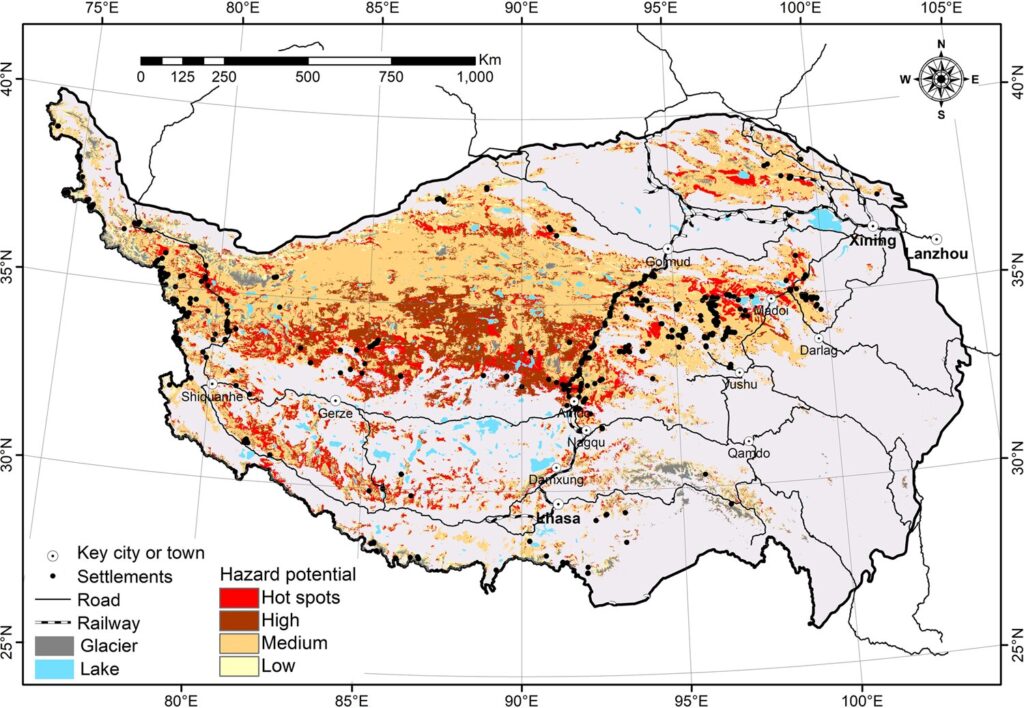(TibetanReview.net, Nov04’22) – The warming rate of the Tibetan Plateau has been twice the global average in recent decades. And climate change-induced permafrost degradation can seriously threaten the stability of the infrastructure in this plateau region and thus increase infrastructure repair and replacement frequency, reported the phys.org Oct 28, citing researchers from the Northwest Institute of Eco-Environment and Resources of the Chinese Academy of Sciences (CAS).
The researchers were stated to have evaluated the economic damage of permafrost degradation on the infrastructure over the Tibetan Plateau for the first time and their results were published in the Communications Earth & Environment on Oct 13.
The researchers were stated to have found that 38% of roads, 39% of railways and power lines, and 21% of buildings may be threatened by permafrost degradation in high-hazard areas by 2050. These proportions may nearly double by the end of this century.
Correspondingly, the additional cost of $4 billion (net present value, 2.85% annual discount rate) by 2050 and approximately $6.3 billion by the end of this century will be needed to maintain the service function of current infrastructure under the historical scenario (SSP245), the report said.
However, under the green scenario (SSP126), an additional cost of $3.6 billion will be required by 2050, which is a substantial reduction compared to the results under SSP245. This reduction could further increase to $1.6 billion by the end of this century, the report added.
Still, controlling global warming below 1.5 °C may reduce the infrastructure in high-hazard zones by approximately half and reduce the costs by $1.3 billion compared to the results under the 2 °C target.

Besides, the adaptation measures for high-grade roads, railways, power lines and buildings would greatly reduce this additional cost. By 2050, the percentage of potential cost savings from adaptations is approximately 15% (SSP245). This savings could reach 21% by the end of the century, the report said.
The Tibetan Plateau is a 970,000 square mile area, which is around five times the size of France, stretching from Western China [ie, occupied Tibet] to Pakistan, that includes areas of Nepal, India, eastern Tajikistan and southern Kyrgyzstan, according to a newsweek.com report on it Nov 2.
Speaking from another perspective, the report noted that freshwater alpine lakes and glacial and permafrost melt on the Tibetan Plateau feed the three longest rivers in Asia and are a major water source for about 20% of the world’s population. And the moisture available from alpine lakes and streams also helps to sustain a fragile semi-arid grassland ecosystem. However, as glaciers and permafrost continue to melt, the lakes, rivers and other water bodies across the Plateau will begin drying out.
“The drier landscape and atmosphere degrades the grassland productivity and contributes to soil erosion that may lead to desertification. Desertification may promote less rainfall and snowfall, causing even further reductions in water supplies,” the report quoted John S Kimball, a systems ecologist at the University of Montana, as saying.


